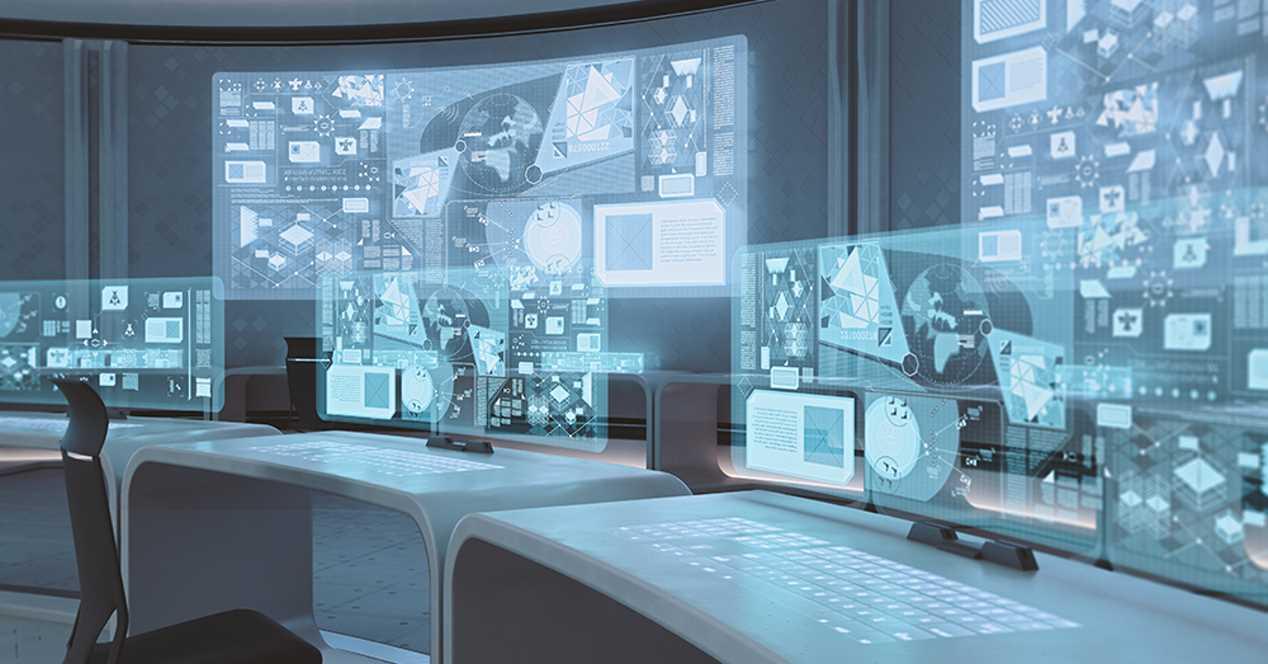The monitor is the ultimate output device, and unlike the mouse and keyboard, it’s constantly evolving with new panel types, higher resolutions, better frame rates, and better color rendering. However, they will not be the only technologies that will mark the future monitors
Today, we keep seeing applications of so-called artificial intelligence in various aspects of computing. This got us wondering how the monitors we connect our PCs to can benefit from this and how this evolution would play out. What conclusions have we reached? Well, a series of improvements that could completely change the way we interact with our computer screen.
The key to everything, the internal circuitry of the monitors
Each monitor has an internal circuit responsible for managing the video signal coming from the video output of the graphics card. Whether DisplayPort, HDMI or any other type of connection. For what it has inside a chip or more chips responsible for carrying out these basic functions. We not only have the power circuit of the device, but in the middle of it a chip that we call LCD or OLED controller, depending on the type of screen we are using, although its operation is the same in the two cases. Whose job is none other than to read the video signal information and decide which pixels are on and each count is on.
This brings us to the concept of Pixel Clock, which tells us how many pixels a monitor can handle per second. If we have a Full HD one, then with a frequency of 60 Hz, then the pixel clock speed will result from multiplying 1920 x 1080 by 60. Which gives us 124 MHz. As you can understand, monitors 4K and with very high refresh rates have a display driver that achieves very high clock speeds. For example, a 4K at 240 Hz can touch 2 GHz, which is the typical speed of a processor.
Obviously, the operation of this chip is quite simple and straightforward and does not require additional complicati ons, however, there is a type of monitor that has much more complex circuitry, which has become popular in recent years and whose internal workings will become the basis for future models.
Smart TV is the basis
Smart TVs are nothing more than monitors that incorporate two additional elements, starting with the circuitry needed to connect the TV to the terrestrial digital signal, where the increasingly disused conventional channels are broadcast. The other element is the circuit of a mobile phone, which allows to run applications, but adapted for use on televisions. It’s these additional elements that make buying a TV more expensive than a monitor when both have the same size and panel type.
However, the circuits they use are extremely simple, many smart TVs do not have much better processors than a low or mid-range mobile in terms of capacity. They also don’t need more for their functions, but at the same time we have the fact that yes or yes they have to make these chips more and more complex, exceeding what the device really requires and they could well be there to stay. Of course, this also opens up the possibility of adding functions that were not possible on a conventional monitor before.
What additional features will be added as standard?
To understand what will be the evolution of PC monitors, we must start from the fact that there are certain technologies that have been seen in Smart TVs that really have their uses in monitors. However, they cannot be implemented as such in televisions, since their implementation is not good enough to be used with a computer.
What do we mean? Well, because the evolution of the simple LCD controller to a processor with a face and eyes will bring a series of additional functions, among which we will find:
- Automatic resolution scaling: which consists in the fact that if a video signal changes to a resolution other than that of the monitor on which it is, it is transformed to adapt to the native resolution.
- Frame interpolation: for creating additional frames. Graphics cards will usually do this job, but this option will also be available on monitors.
- Automatic color calibration: ideal for graphic designers.
Among many others and all thanks to the fact that the chip in charge of managing the image on the monitor will eventually evolve and with it these additional functions can be added. Many of these have already been found in high-end smart TVs for years, and we honestly think they’ll eventually make their way to PC monitors as additional features, although the ones we’ve mentioned aren’t the alone.











